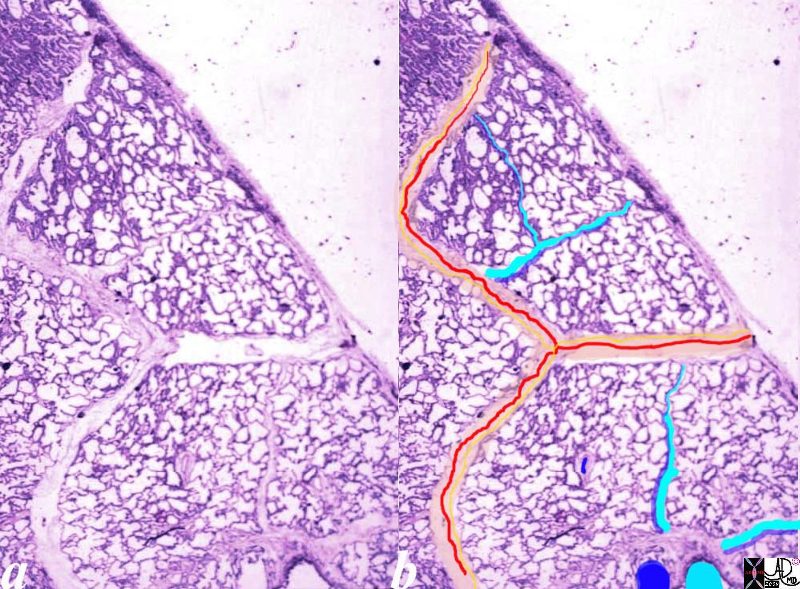
Keywords:
lung pulmonary alveoli alveolus secondary lobule interlobular septa vein lymphatic histology interstitium interstitial normal copyright 2020 all rights reserved
Courtesy of: Armando Fraire, M.D.
Sarcoidosis
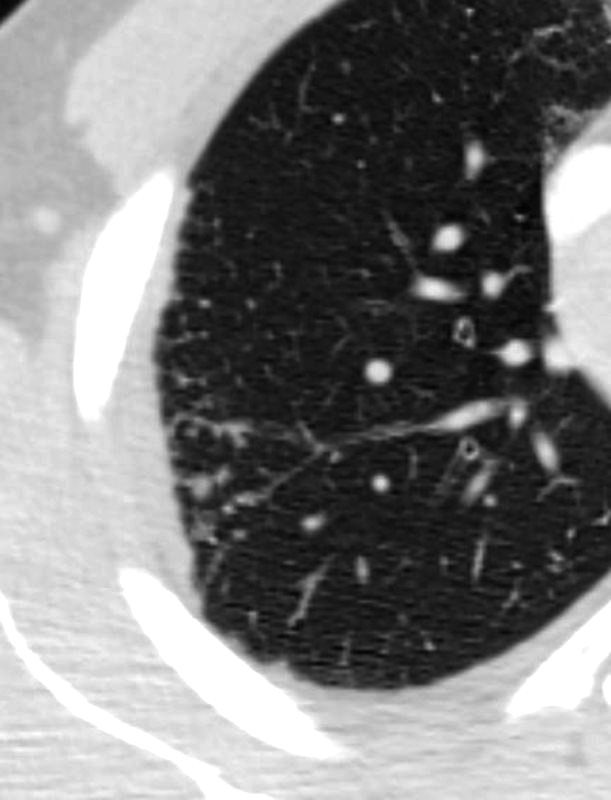
SARCOIDOSIS, ACTIVE – ALVEOLAR FORM
Ashley Davidoff MD
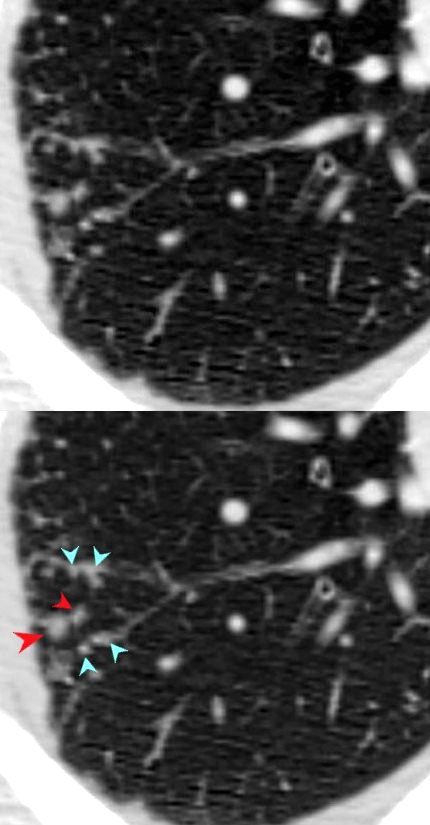
Ashley Davidoff MD
CHF
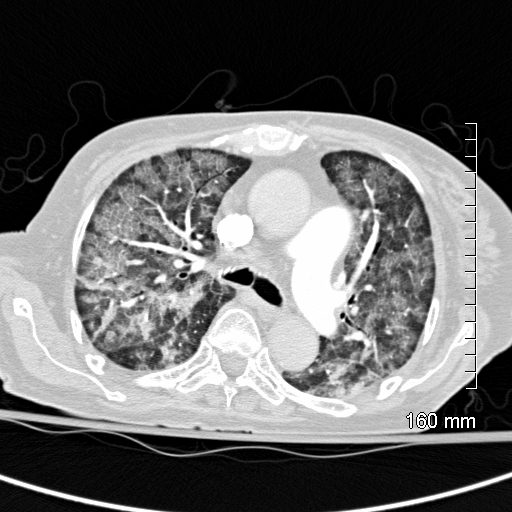
CT scan shows Diffuse ground glass pattern with thickening of the interlobular septa and manifesting as crazy paving pattern
Ashley Davidoff MD
Pulmonary Alveolar Proteinosis
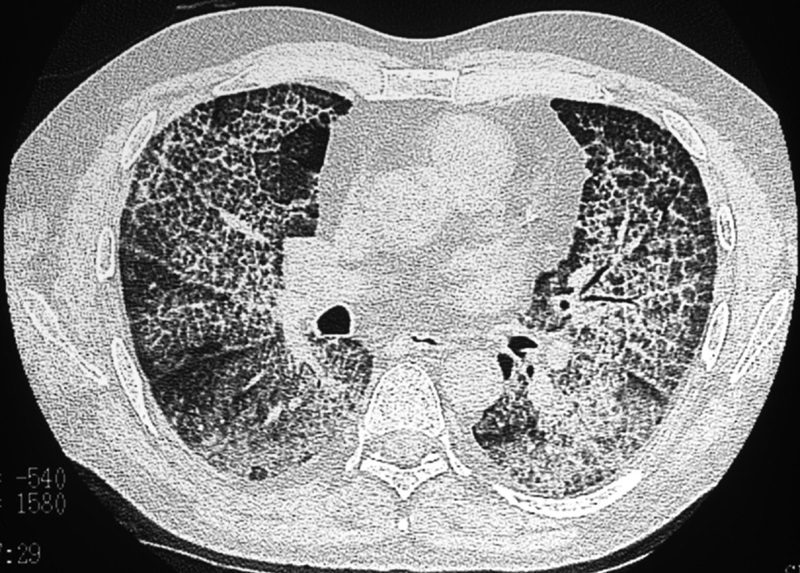
Source
Signs in Thoracic Imaging
Journal of Thoracic Imaging 21(1):76-90, March 2006.
ILD
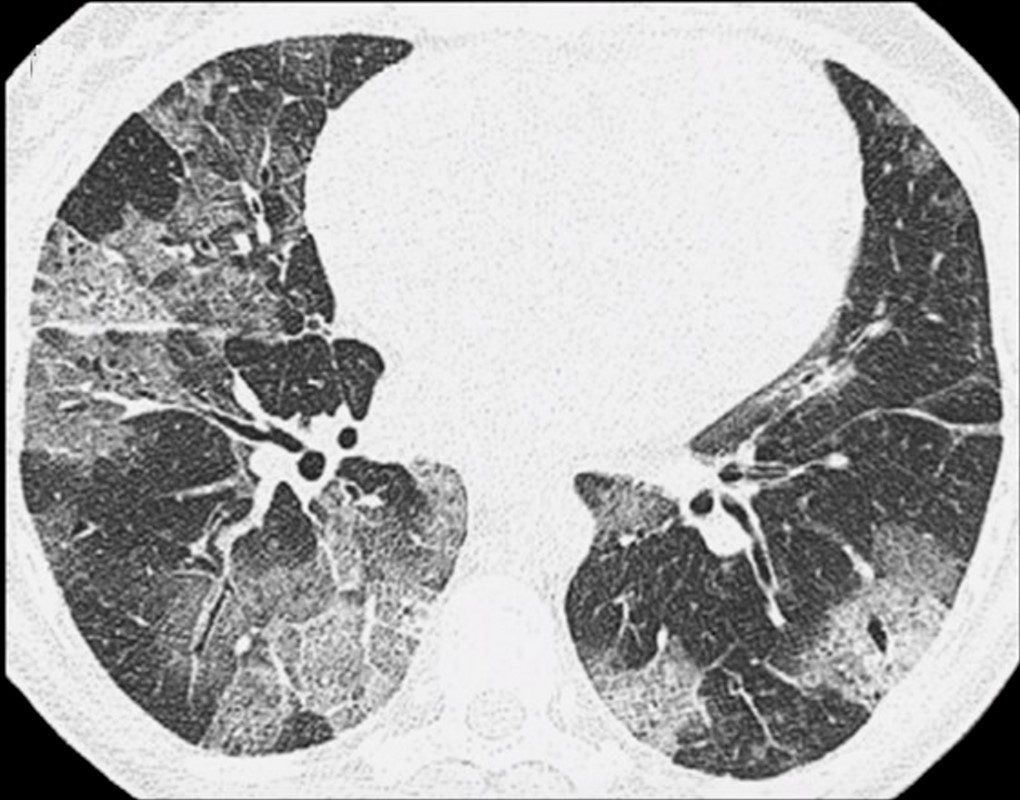
Crazy paving in ILD is a CT feature of interstitial lung disease and is characterised by diffuse ground glass caused by a combination of interlobular septal and intralobular septal thickening resulting well demarcated patchy densities in the lungs.
